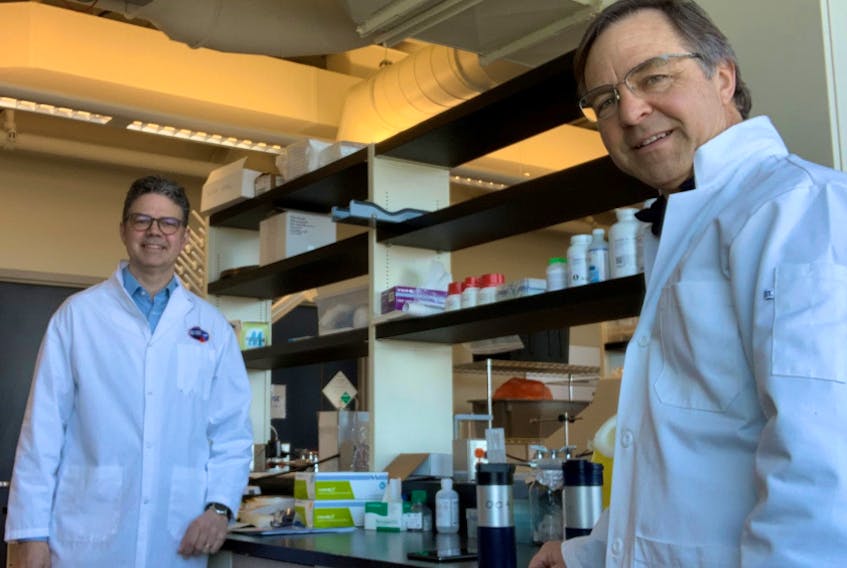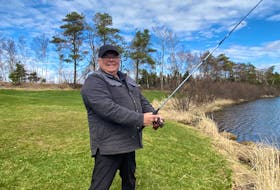CHARLOTTETOWN, P.E.I. — For six years, Bill Whelan had worked on a project to let farmers quickly test crops and animals for disease without needing to send samples away to a lab and wait for days.
Then, the coronavirus (COVID-19 strain) pandemic began.
When the Canadian Institutes of Health Research, CIHR, sent out a call to researchers across the country for help, Whelan and his small team knew their product could mean quicker on-site testing for the virus.
The CIHR awarded the UPEI team a two-year $356,000 grant on March 13 to speed up and pivot their research to human viruses, like COVID-19, said Whelan.
“It’s a considerable amount of money, so it will allow us to hire a full-time technician, a full-time lab researcher. It will allow us to hire, basically, the personnel that we need to accelerate the research.”
Whelan, a medical physicist at UPEI, co-leads the team of seven with Andrew Trivett, of Sustainable Design Engineering at UPEI.
Originally designed to work on a farm, the main device in the testing kit is about the size of a coffee thermos. It uses credit-card sized cartridges preloaded with specific chemicals, which emit light with a positive result when inserted into the testing unit. This information is then sent to a paired mobile phone in 30-60 minutes, said Whelan.
“One of the innovative aspects of the technology is it could be used anywhere. You don’t need a flat surface. You don’t need pristine lab conditions. It’s meant to be a rugged, portable, on-site diagnostic tool.”
"I was quite concerned over those few days and thought more about the technology that we just received the grant for… thinking of my experience, I would have been much happier to know in less than an hour if I was positive or not.”
For Whelan, the speed of the test which is a crucial part.
He had developed symptoms after returning from London and was self-isolating when he found out his team won the grant.
The wait for the negative test result was excruciating, he said.
“Those two days weighed quite heavily on me. I was quite concerned over those few days and thought more about the technology that we just received the grant for… thinking of my experience, I would have been much happier to know in less than an hour if I was positive or not.”
The first half of the two-year grant, $178,000, will be rolled out in the next week for Whelan’s team to get to work.
The first step is to get the necessary bio-safety certifications and protocols required for researching viruses. Then, they’ll hire two researchers for the experimental part of the project, though it’s still too early to say when those experiments might start, said Whelan.
“The only reason it’s unclear is the working landscape at the university has changed because of the current situation. It’s a bit of a moving target at this point, but we will move forward, right now, with the first round of hiring.”









